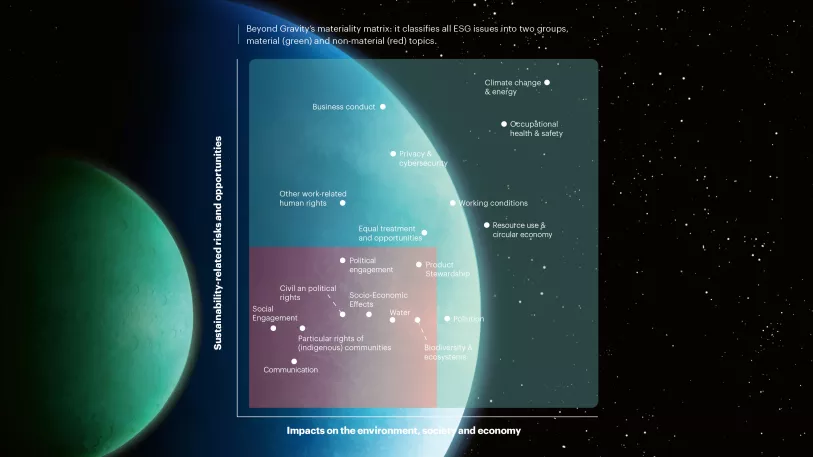As a technology company with a global presence, we pursue a strategy that creates value for all stakeholders along the entire value chain - taking into account economic, environmental and social aspects in all our activities.
Definition of the strategy
As Beyond Gravity is fully owned by the Swiss Confederation, our strategic direction is defined in the owner strategy. The 2020-2023 owner strategy and the new owner strategy for 2024-2027 indicate that we need to align our business activities in an environmentally sustainable way. Based on this requirement, we defined our first sustainability strategy in 2022. The three key strategic issues are complemented by measures in the areas of social and governance.
In 2023, we conducted an expert-based double materiality assessment to determine our material topics, which are the core of our first comprehensive sustainability report.
The concept of double materiality is essential for sustainability reporting – in particular, to meet various regulatory requirements. Determining our material topics according to the principle of double materiality is an important step in defining and guiding our sustainability efforts. With our materiality assessment, we want to link the topics which have a high level of impact on the economy, society and the environment with the topics which present sustainability related risks and/or opportunities for the company.



